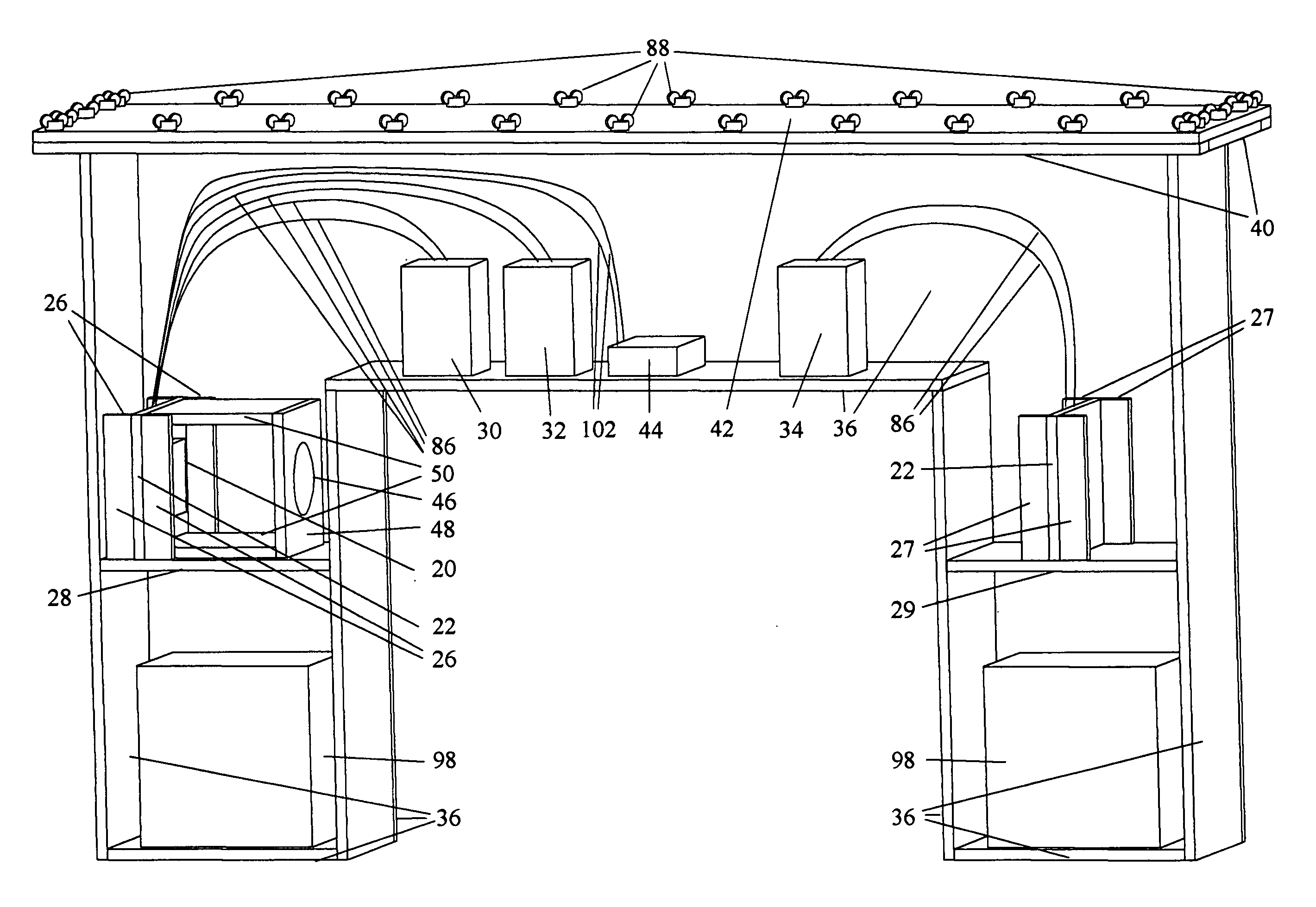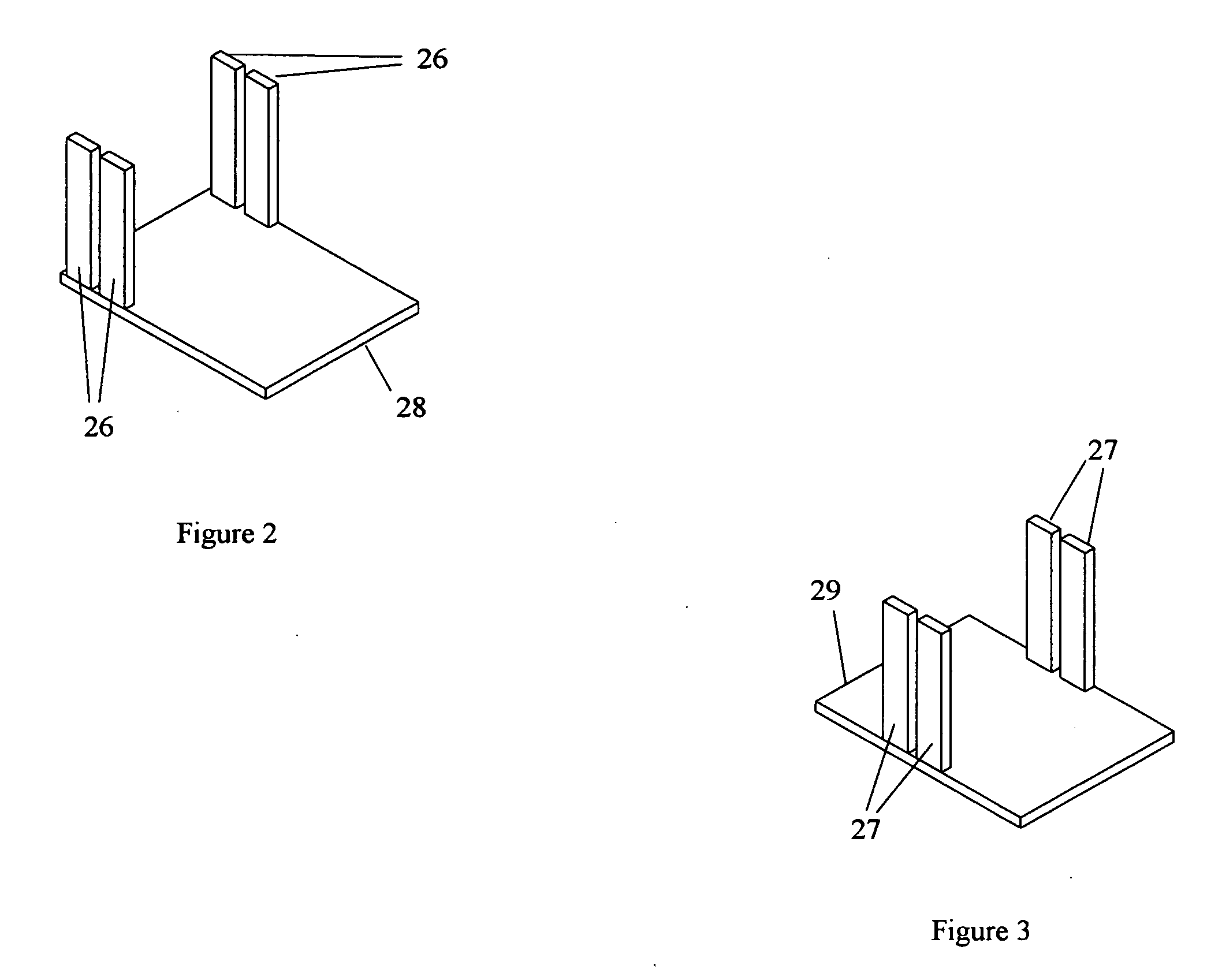Non-invasive active infrared triggering device to monitor amphibian and other animal life in aqueous environments
a technology of active infrared and triggering device, which is applied in the direction of optical detection, optical radiation measurement, instruments, etc., can solve the problems of inability to draw limited conclusions about aquatic amphibian movement patterns, unsatisfactory and unreliable methods of using pit tags, and inability to provide specific time of day
- Summary
- Abstract
- Description
- Claims
- Application Information
AI Technical Summary
Problems solved by technology
Method used
Image
Examples
Embodiment Construction
—PREFERRED EMBODIMENT—FIGS. 1-14
[0081]The apparatus of the present invention employs an active infrared emitter and an active infrared detector to assist in recording the date and time an aquatic amphibian or other aquatic animal of a pre-selected size passes through a predetermined aqueous location. The following description can be more readily understood by referring to FIGS. 1-14.
[0082]Referring to FIGS. 1, 2-5, and 13, an emitter circuit 24 is attached to a Plexiglas backing 22 with four machine screws 52, four ¼-inch nylon spacers 54, four nuts 56, and four washers 58 through four previously drilled holes (refer to FIGS. 4 and 5). The Plexiglas backing 22 slides in between four thin vertical Plexiglas supports 27, keeping the Plexiglas backing 22 upright and aligned with the detector circuit 20. The vertical Plexiglas supports 27 are welded to the upward side of the bottom Plexiglas support 29. Two vertical Plexiglas supports 27 are welded on each side of the bottom Plexiglas s...
PUM
 Login to View More
Login to View More Abstract
Description
Claims
Application Information
 Login to View More
Login to View More - R&D
- Intellectual Property
- Life Sciences
- Materials
- Tech Scout
- Unparalleled Data Quality
- Higher Quality Content
- 60% Fewer Hallucinations
Browse by: Latest US Patents, China's latest patents, Technical Efficacy Thesaurus, Application Domain, Technology Topic, Popular Technical Reports.
© 2025 PatSnap. All rights reserved.Legal|Privacy policy|Modern Slavery Act Transparency Statement|Sitemap|About US| Contact US: help@patsnap.com



